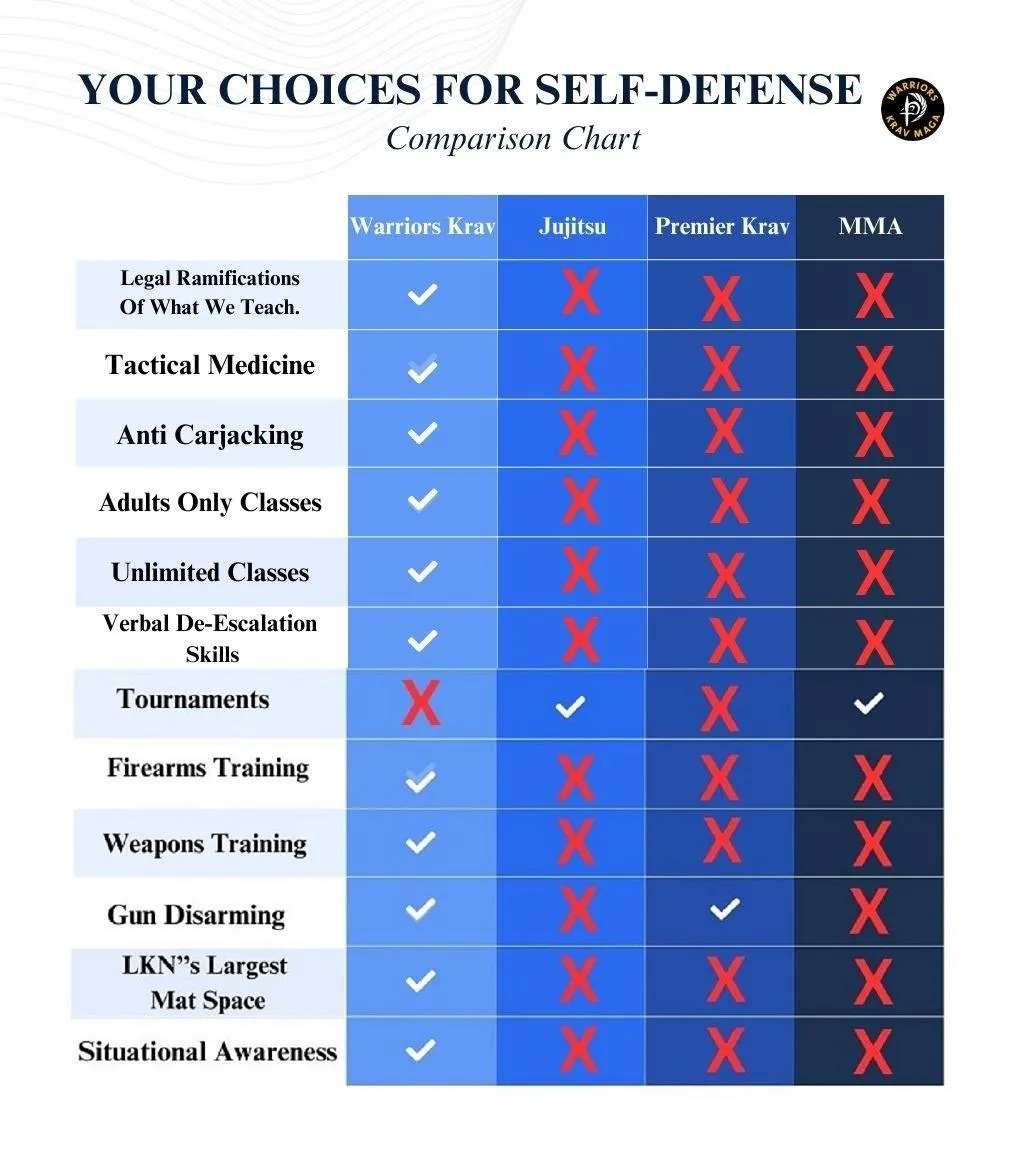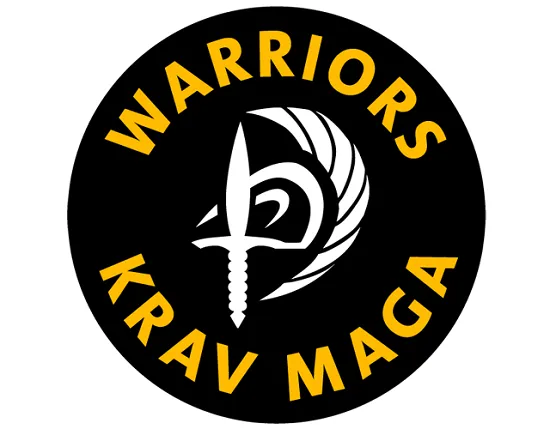Krav Maga Lake Norman
Real Self-Defense That Works
Get Fit, Have Fun, Learn Self-Defense
Violence won’t wait for the right moment. If you’re in Huntersville, Cornelius, or the Lake Norman area, it’s time to get ready—before you need to be.
No sport rules. No flashy moves. Just real-world Krav Maga training in Huntersville—designed to prepare you for actual threats, not tournaments.
Whether you want to protect yourself, your family, or just feel unshakable in any situation , this is where you start.
The question isn’t if you need self-defense—the question is, will you be prepared?
Why Residents of Lake Norman Choose Krav Maga LKN
Located on Old Statesville Rd next to the new Aquatic Center, makes for easy access from Cornelius, Huntersville, Davidson, Denver, Mooresville, and Charlotte.
Whether it's for you or your teenager, we have classes for both.
Adult classes are for men and women 18 years old and above, while the teen classes are for those 12 to 17 years old. Both focus on real threats, not sport, tournaments, or tradition.
There are no forms or pajamas either.
The instructors, professionals trained in how to cope with non-consensual violence, have only one goal. To make you more dangerous so you're less likely to ever be chosen as a target.
See the comparison chart below to see exactly what we mean.

Pre-Attack Cues Every Criminal Does Unconsciously
One of the problems you have is being able to distinguish between a genuine inquiry when someone approaches you, and a potential setup by a criminal.
At Warriors Krav Maga we'll teach you the four pre-attack indicators that criminals do, unconsciously, before they attack someone. That way, you'll have a massive head start should you become involved in a potential attack.
What others are saying

"Love It"
“Every single class you will learn something useful. Well into my 50’s I’m in the very best shape of my life. I’ve learned to recognize and avoid danger and defend myself if I need to. I can’t say enough about the workouts, & the club.”
Donna E.


"Real World Experience"
“Nick has many talents from his years in the trenches. Real-world experience that he can call on to teach us the best way to deal with adverse situations.
He is not like a lot of other so-called instructors who only teach theory. I am a 57-year-old male with total hip replacement so if I can do this, anyone can.”
Tom Norment


"Very Knowledgeable"
Very knowledgeable instructors who focus on practical self-defense that anyone can learn, regardless of age and ability.
Very welcoming environment.
William Cain

Frequently Asked Questions
Is It Safe?
As safe as we can make it for our students, yes. In over 30 years of teaching, we’ve never had a serious accident in class. Of course, we’re learning to deal with non-consensual violence and unarmed combat, so there will occasionally be bumps and bruises along the way.
We like to call them “Krav Kisses.” For your information, the most dangerous sports in the world, according to statistics, are horseback riding, cheerleading, and gymnastics. Other sports included in that list are bull riding, boxing, football, motocross, rugby, and wrestling.
Krav Maga doesn’t make it into the top fifty.
Do I need any prior experience to join your classes?
No prior experience is required. Our classes are suitable for all skill levels, from beginners to advanced practitioners. Our instructors provide personalized guidance to help you progress at your own pace.
What should I wear to my first class?
For your first class, wear comfortable athletic clothing and trainers.
We supply you with everything else you need while you check out the classes during your free trial.
How do I sign up for a membership or schedule a class?
You can schedule your two-week trial through our website's registration page, or simply click one of the orange "Trial" buttons found on every page.
Alternatively, you can reach us through the contact page. Our staff will be happy to help you find the best option to start your journey.
Is There An Age Limit?
Yes. Our adult classes are for those eighteen and over and we also have teen classes for ages 12 thru 17. We don’t teach kids due to the nature of the material and because we’re serious about self-defense and not really interested in running a daycare center.
There’s no upper age limit, and we have several students north of 60. Obviously, as mentioned above, if you are over 40, it’s a great idea to get your doctor’s okay.
Can I Start Anytime?
Yep. Click on the button below and schedule your first session.
Do I Have To Be In Shape?
No. That’s like asking if you must be flexible before joining a yoga class or know how to play the guitar before you get guitar lessons.
We will get you in shape at the same time as you’re learning self-defense. That’s one way to make getting in shape so much fun. Because your workout is hidden inside the lessons, you don’t even notice you’re doing a killer workout.
Having said that, we highly recommend that if you’re over the age of 40, you get your doctor’s approval. We also want everyone to know that when you join, you’re on a honeymoon for the first month. That means if you need to take a break during class, you take one. No need to ask for anyone’s approval.
After the first month, we rarely find anyone who needs the break again. We’ve even had many students on inhalers who don’t need them after a few months of training.
How Long Before I See Progress?
That depends very much on the individual. Some people pick things up quickly usually due to playing a lot of sports when younger and being coordinated. Other people take a little longer.
It doesn’t really matter as long as you’re progressing. We want you to walk out of every class a little bit more knowledgeable about the subject of self-defense and a little bit more dangerous. As long as you’re doing that, we’re happy.
Because we’re not preserving a classical art form, it’s important to note that you will progress much faster than a traditional martial arts school. You don’t have forms to learn and archaic techniques designed to deal with someone wielding a 15th-century farm tool.
Are There Belts?
Nope. There is a Krav organization that stole the concept of belts from the Japanese martial arts, but at Warriors Krav Maga, we use colored t-shirts to denote rank.
Everyone starts in an Ash Gray shirt. Your first test is for a blue shirt. The next is tan, then red, then steel gray, and finally black. There are six levels of black shirts in the system.
Are There Any Women In The Class?
Yes. We’re immensely proud of our female students, who seem to take the whole thing more seriously than the guys.
Women make up roughly 40 percent of the class. Obviously, they’re very concerned about self-defense, but Krav Maga also lends itself to females due to its use of simple, effective, and aggressive techniques.
What Is Krav Maga?
Krav Maga is a practical, real-world self-defense system developed for the Israeli military. It’s designed to be easy to learn and highly effective under stress.
Is It Good For Beginners?
Absolutely. Many of our students had no martial arts or self-defense experience before starting. We’ll guide you every step of the way.

FOLLOW US
COMPANY
CUSTOMER CARE
LEGAL
GET FIT
HAVE FUN
LEARN SELF-DEFENSE
Copyright 2025. Krav Maga LKN. All Rights Reserved. Tel: 704-299-0681
